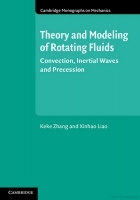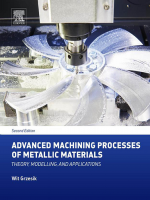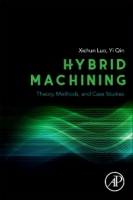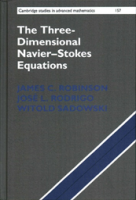Numeryczne modelowanie zjawiska kawitacji w dwuwymiarowych zwężkach zbieżno-rozbieżnych z zastosowaniem podejścia homogenicznego *
Numerical modeling of cavitation phenomenon in a two-dimensional converging-diverging nozzle using a homogeneous approach
Author: Agnieszka Niedźwiedzka
Mechanik nr 07/2018 - Hydraulika i pneumatyka
STRESZCZENIE: Artykuł prezentuje wyniki symulacji numerycznych zjawiska kawitacji w zwężce zbieżno-rozbieżnej, z zastosowaniem podejścia homogenicznego. Analizowane są trzy modele: model Schnerra i Sauera, model Singhala i in. oraz model Zwarta i in. Symulacje są niestacjonarne. Geometria jest planarna. W symulacjach numerycznych wykorzystano oprogramowanie Fluent. Celem pracy jest ocena możliwości zastosowania planarnych symulacji numerycznych przepływu kawitacyjnego dla niewielkowymiarowych zwężek zbieżno-rozbieżnych. Motywacją do przeprowadzenia symulacji numerycznych zjawiska kawitacji dla planarnej geometrii są trudności w uzyskaniu wyników odzwierciedlających przeprowadzone pomiary eksperymentalne, zarówno dla geometrii dwu-, jak i trójwymiarowej. Otrzymane wyniki symulacji numerycznych wykazują duże podobieństwo do pomiarów eksperymentalnych dla wszystkich analizowanych modeli.
SŁOWA KLUCZOWE: numeryczna mechanika płynów, kawitacja, podejście homogeniczne, zwężka zbieżno-rozbieżna
ABSTRACT: The article presents results of numerical simulations of cavitation phenomenon in a converging-diverging nozzle using the homogeneous approach. Three cavitation models are considered: the Schnerr and Sauer model, the Singhal et al. model and the Zwart et al. model. The simulations are performed for transient. The geometry is two-dimensional and planar. In the numerical calculations Fluent software was used. The aim of the work is to estimate the possibility of applying of two-dimensional planar numerical simulations of cavitating flows for small-sized converging-diverging nozzles. The motivation to conduct numerical simulations for two-dimensional and planar geometry are difficulties in obtaining results, which reflect experimental measurements, both for two- and three-dimensional geometry. The achieved results show a big similarity between the results of performed numerical simulations and the material from the experimental measurements for all the analyzed models.
KEYWORDS: numerical fluid mechanics, cavitation, homogeneous approach, convergent-divergent nozzle
BIBLIOGRAFIA / BIBLIOGRAPHY:
- Andriotis, A., Gavaises Manolis, Arcoumanis C. “Vortex flow and cavitation in Diesel injector nozzles”. Journal of Fluid Mechanics. 610 (2008): s. 195–215.
- Gupta Manoj Kumar, Sharma Dharmendra S., Lakhera Vikas J. “Vapor bubble formation, forces, and induced vibration: A review.” Applied Mechanics Reviews. 68, 3 (2016): s. 030801.
- Niedźwiedzka A., Schnerr G.H., Sobieski W. “Review of numerical models of cavitating flows with the use of the homogeneous approach”. Archives of Thermodynamics. 2 (2016): s. 71–88.
- Niedźwiedzka A., Sobieski W. “Experimental investigations of cavitating flows in a Venturi tube”. Technical Sciences. 19, 2 (2016): s. 151–164.
- Schnerr Günther H., Sauer Jürgen. “Physical and numerical modeling of unsteady cavitation dynamics”. Proc. of the 4th International Conference on Multiphase Flow (ICMF 2001). New Orleans (USA), 2001.
- Singhal Ashok K., Athavale Mahesh M., Li Huiying, Jiang Yu. “Mathematical basis and validation of the full cavitation model”. Journal of Fluids Engineering. 124 (2002): s. 617–624.
- Zwart P.J., Gerber A.G., Belamri Thabet. „A two-phase flow model for prediction cavitation dynamics”. Proc. of the 5th International Conference on Multiphase Flow (ICMF 2004). Yokohama (Japan), 2004.
DOI: https://doi.org/10.17814/mechanik.2018.7.71
* Artykuł recenzowany


.jpg)


















